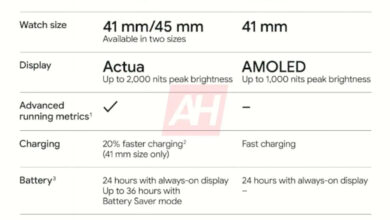The best tablets for 2024

Whether you’re a professional on the go, a parent looking for an educational tool for your kids, or simply someone who loves to stream shows and browse the web, there’s a tablet out there that’s just right for you. When it comes to the best tablets, the Apple iPad leads the pack. Known for its sleek design, powerful performance and user-friendly interface, the iPad is a go-to choice for professionals and regular users alike. But not everyone wants to spend all of their cash on an iPad. Android tablets offer a lot of flexibility, making them a favorite among tech enthusiasts and those who prefer a more customizable environment. They tend to be cheaper than iPads as well, but still come packed full of many all-important features. With our top picks from both Android and iOS, you’ll find the best tablets that match your needs and lifestyle.
Which OS is right for me?
Before you even start looking at specific devices, consider how your new tablet will fit in with the gadgets you already own, and how you plan to use it. For example, if everyone in your house uses Macs and iPhones, it probably doesn’t make a lot of sense to buy an Android tablet, even if you’ve been tempted by the massive 14.6-inch screen on the new Galaxy Tab S9 Ultra. This goes double for anyone with an extensive library of purchased videos and music that might be harder to access after switching platforms.
Another consideration is the kind of work you’ll be doing. That’s because while most modern tablets are adept at browsing websites or playing games, some operating systems like iPadOS and Windows 11 are better designed to support multitasking and productivity than Android or even Chrome OS. It’s a similar situation for software, because while most popular apps and games are available on both Apple’s App Store and Google’s Play Store, more specialized software may only have proper support on desktop platforms like Windows or macOS.
What size screen should I get?
Figuring out the best screen size for you will also be related to the kind of work (or play) you intend to do. Larger displays make it much easier to view two apps side by side, and big screens also deliver a more immersive movie viewing experience. But at the same time, the larger the tablet, the less likely you’re going to want to move it around. That means you’re not only going to want to take stock of your workspace (i.e., if you have a desk or instead plan to work from a couch or even your bed), you’re also going to want to think about how the device will fit into your everyday routine or commute (if you have one).
How we test tablets
When evaluating different tablets, there are a few important things we look for above all else: solid performance, a good screen and long battery life. For performance, we run a handful of synthetic tests like Geekbench 6, while also performing a number of hands-on, real-world use cases such as editing photos and playing games. And with tablets often serving as hybrid devices, we also consider how easy it is to multitask and switch quickly between various apps. The more responsive a device feels, the better.
Because a tablet’s display is such a critical component, we also view a wide range of content to gauge things like brightness, color gamut and dynamic range. It’s important to take into account the difference between various panel types like OLED, which typically produce richer colors and excellent contrast but may not be as bright as a mini LED display. Recently, refresh rate has become an increasingly important spec as 90Hz and 120Hz screens can make scrolling smoother and graphics appear sharper in games.
We also consider a tablet’s design (including things like size, weight and water resistance), its connectivity (WiFi, Bluetooth, NFC, 5G, et cetera) and special features like stylus support or the ability to serve as a secondary display. That’s because, while tablets were often viewed as content consumption devices in the past, higher-end devices like the Surface Pro and iPad Pro are more than capable of replacing a laptop for a lot of people.
Finally, we test battery life by running our standard local video rundown test, which involves playing a single video on a loop from 100 percent until it runs out of juice. Ideally, a tablet should be able to last an entire working day, but longer runtimes are always welcome.
Best tablets for 2024
Other tablets we tested
Google Pixel Tablet
The Google Pixel Tablet excels as a smart display rather than a simple tablet. As the latter, it’s unexciting, but when paired with its speaker/charging dock, it becomes much more useful. It could be a good option for those that already live within the Google ecosystem and use the Google Assistant often, or those who like the idea of a tablet that can be docked and used as a smart display as well.
OnePlus Pad
The solid OnePlus Pad is let down by Android because there aren’t many Android apps designed to be used on a large display like this model’s 11.6-inch panel. Otherwise, the hardware is well-designed, its companion stylus is comfortable to use and it has an excellent battery life.
Tablet FAQs
What is the best brand for tablets?
The best brand for tablets is really the brand you feel most comfortable with. We recommend taking stock of the gadgets you already have — do you live in the Apple ecosystem already? An iPad might be best for you then. Do you have a Samsung phone? If so, a Galaxy Tab will likely be the most convenient choice. There is no one “best brand” for tablets; you’ll find good options made by companies including Apple, Google, Samsung, Microsoft and Amazon.
Can a tablet replace a laptop?
It’s possible for a tablet to replace a laptop, but you’ll need a few accessories to truly make the experience as close as possible to that of a traditional notebook. A keyboard is a must, be it a keyboard case or a Bluetooth accessory that you keep with you. Some keyboard cases, like apple’s Magic Keyboard for the iPad, have a built-in trackpad, which will be more ergonomic than tapping on your tablet’s screen for input. Additionally, you could go one step further and use a wireless mouse that connects via Bluetooth to your tablet. If you’re primarily looking for a tablet to replace your laptop, consider buying a 2-in-1 laptop since those systems typically consist of high-powered tablets that are designed to work well with (and without) keyboards.
Tablet accessories
Finally, you’ll want to consider any add-ons or accessories you’re planning to use, which can range from detachable keyboards to things like external mics or a stylus. The good news is that many of the best tablets nowadays offer some kind of keyboard accessory, which allows the device to function more like a 2-in-1 instead of simply being a content consumption device. Some tablets also feature things like microSD card slots that support expandable storage, or optional 4G or 5G connectivity, which can be a real boon to frequent travelers. And if you’re planning to use the tablet mainly for work, you might want to grab a USB hub for connecting all your favorite peripherals so your devices don’t have to fight for the charger.
Recent updates
June 2024: We updated our top picks to include the Microsoft Surface Pro Copilot+ edition.
Nathan Ingraham and Jeff Dunn contributed to this report.
This article originally appeared on Engadget at https://www.engadget.com/best-tablets-150026056.html?src=rss

